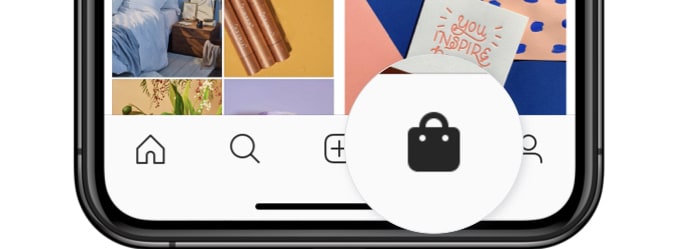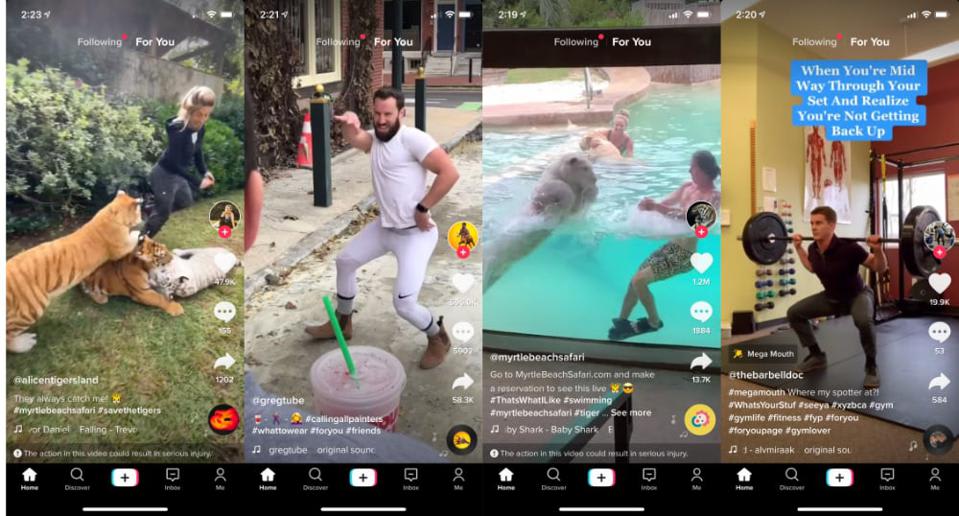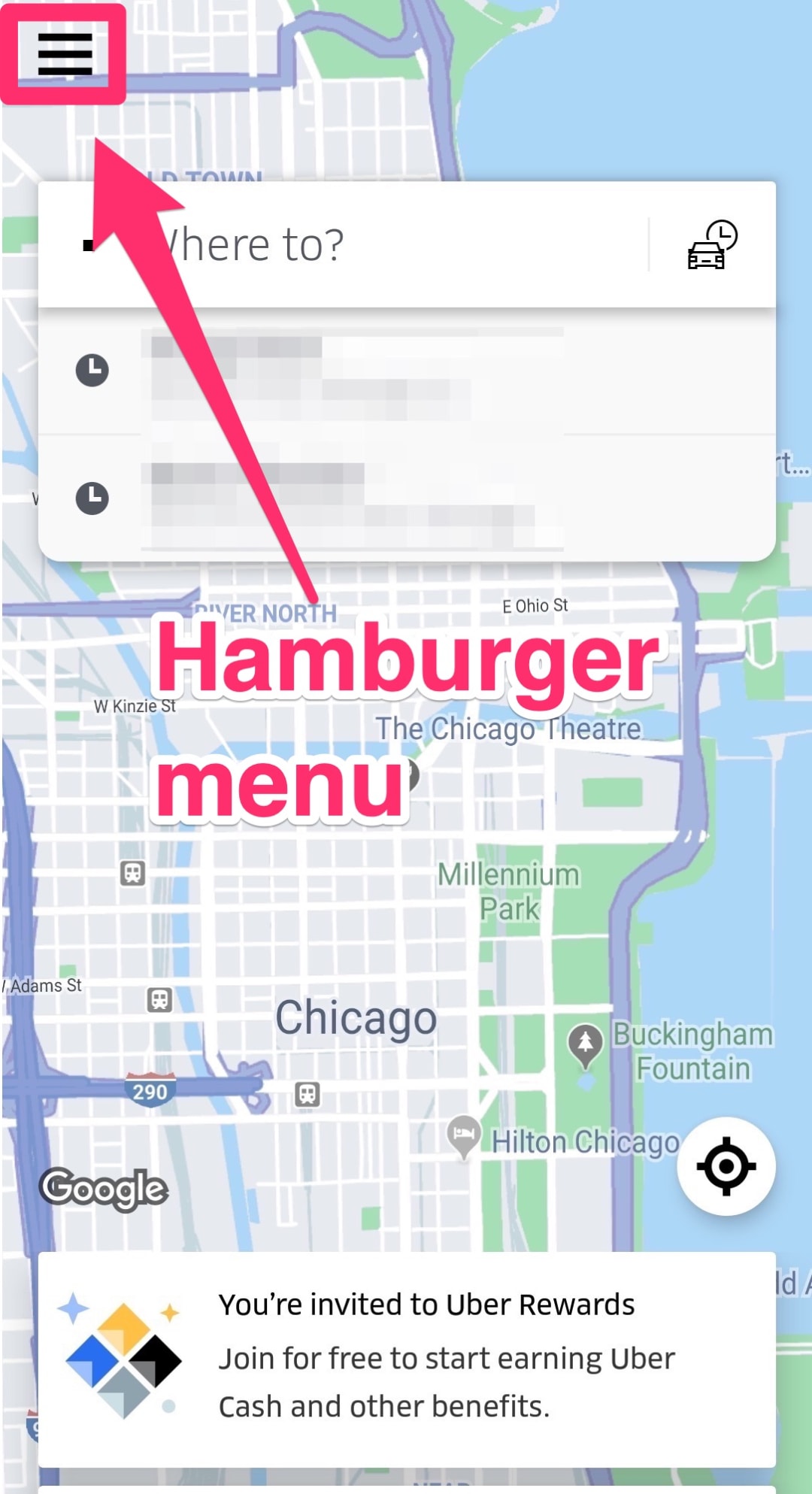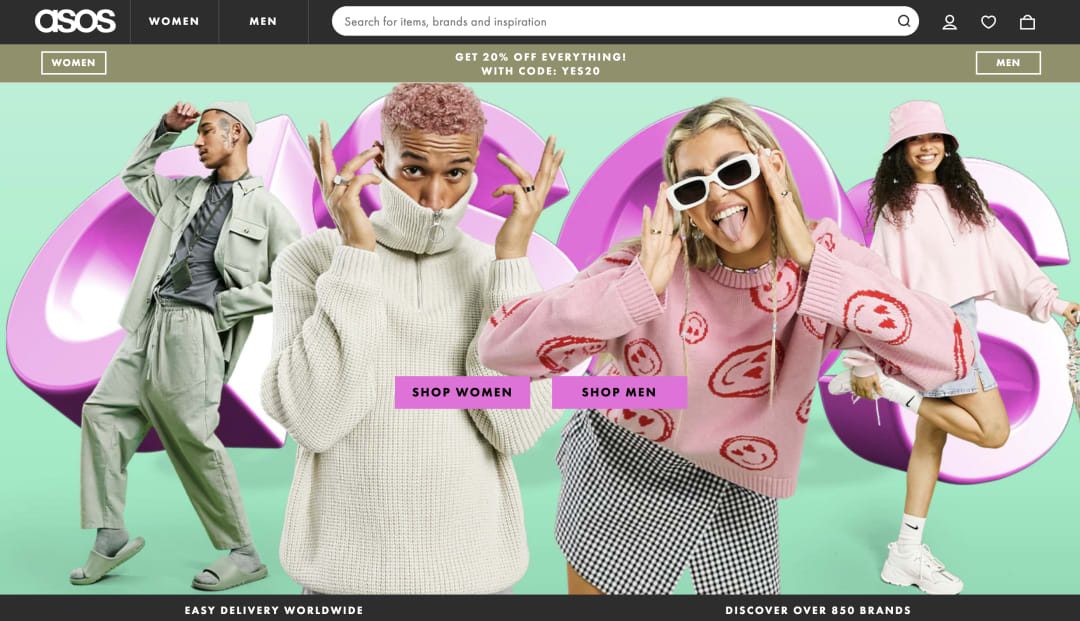E-commerce UX Design Tips for Design Success in 2021 was originally published on Springboard.
In part motivated by the 2020 pandemic—in part as a response to increased industry-agnostic digitization, today’s direct-to-consumer brands are reconsidering the way they approach driving sales. A recent McKinsey report showed that 75% of today’s buyers and sellers prefer to shop using digital options instead of face-to-face interactions. American e-commerce growth shows no signs of stopping: eMarketer projects U.S. retail e-commerce sales to increase to $843.15 billion in 2021 (up from $794.5 billion in 2020). Are you questioning, why that is? The answer is pretty simple, e-commerce UX (user experience) plays a vital role in enhancing customers’ buying experience.
Gartner emphasizes the importance of customer experience for shoppers—reports show that 64% of customers generally value the quality of customer experience over price. So, how do brands keep up with the demand for top-notch customer service online—and the increased competition? At the forefront of the strategies implemented to keep up with the rapid shift towards e-commerce is one marketing tactic in particular: strong UI/UX design.
In a 2020 article, the Guardian confirmed that in the e-commerce space, the “quality of customer experience provided by a brand will be more important than price and product as a key differentiator.” For aspiring UI/UX designers looking to bring their skills to e-commerce in 2021, it’s important to notice these trends—and be ready to hit the ground running to accommodate for a constantly evolving buyers’ journey.
E-commerce UX: Successful UI/UX Design Strategies
In response to the new landscape, online retailers are placing an emphasis on providing services that cater directly to the digital customer experience. Here are a few examples of how this emphasis translates into popular core UI/UX elements.
- Focus on mobile-first, web later.
Mobile purchases are expected to drive 72.9% of e-commerce sales this year. It’s no coincidence that Instagram shifted one of its core home screen buttons to drive users to shop online and make it easy to purchase directly through the app. A design that doesn’t translate into mobile is a missed opportunity.
 Source: Instagram
Source: Instagram
A designed image is worth a thousand words—primarily because of how translatable it is. Easy-to-translate designs will often communicate to their users through visuals, using elements like overlaying graphics on top of photos that are easily scalable across different screen sizes.
- Keep it short and keep it simple.
The time shoppers spend online—especially on social media—has caused people to have shorter attention spans, meaning people are waiting even less for the feeling of instant gratification when scrolling. A Forbes article examining the success of TikTok quotes Dr. Julie Albright, who studies the science behind modern social media and entertainment: “When you’re scrolling… sometimes you see a photo or something that’s delightful and it catches your attention,” Albright says. “And you get that little dopamine hit in the brain… in the pleasure center of the brain. So you want to keep scrolling.”
 A collage of images from TikTok by John Koetsier
A collage of images from TikTok by John Koetsier
Source: TikTok
UI/UX designers should take a page out of TikTok’s book when it comes to e-commerce UX, and emphasize quick, easy features that translate to creating simple, primary navigation. Well-organized tabs or categories that lead to clear, established product pages make it easy for users to make purchase decisions. Methods like the hamburger menu, for example, act both as a space-saving mechanism and a signal to tap for more is an easy way to communicate to users that an itemized list is to appear upon clicking.

Ultimately, as a UX designer working on e-commerce UX, your goal should always be to shorten the buyers’ journey and convert to purchase (better e-commerce UX). The last thing you want to happen is for a shopper to get lost along the way: always ensure that the checkout process is quick and easy, minimalist, and free of distractions.
- Design to help your customers.
Remember that the customer is always right, in front of their screen. Successful e-commerce UX design should recreate the ease of a physical shopping experience without leaving the customer feeling like they’re compromising just because they’re doing it online. Today’s UI/UX designers prioritize additional elements to guide shoppers along, such as:
- Effective UI/UX writing next to products. This can range from descriptions on a product page, to microcopy on a call-to-action button, error messages, and confirmation emails. Effective UX writing creates frictionless interactions and avoids frustration for users so they know exactly what to expect at every part of the navigation—from the time they spend browsing for sizes to the moment they’re ready to check out.
- Intuitive design to flexibly resonate with users of all ages and demographics. Older users ages 40 and above are no longer adjusting to making digital purchases online—they are a new core demographic with their own set of priorities. Recreating user experiences for older shoppers might mean reconsidering more modern user experience best practices such as removing a hamburger menu, adding long-form text instructions, and ensuring there are fewer distractions like pop-up pages.
- Adding customer experience methodology to functional user experience design. Amatore mentions that the most common pain points brands usually face are around translating the fitting experience for items that are notoriously difficult to shop for. “When solving for design issues that carry over to real life, it’s just as much about customer service as it is about user experience,” says Amatore. “This is a great opportunity for designers to bring together elements of good design thinking with hard numbers and data around aspects like customer satisfaction.”
- Embrace smarter tech for smarter shoppers.
Tech companies are responding to the increased demand for UX design tools and talent by building out software that assists designers with elements of artificial intelligence and machine learning. As Art Tawanghar, a senior designer and former UX mentor at Springboard mentions, “the process of creating a better UX comes down to AI algorithms.” Already, some design firms are shifting their focus to offer brands access to a technical UI/UX design edge.
Designers should expect—and be prepared to work with smarter technology. Smarter e-commerce UX systems will leverage powerful UX tools to track a user’s behavior as they shop and then adjust their algorithms to deliver engaging, curated experiences that feel personalized to each user. Some newly popular technologies revolve around maintaining that extra-curated shopping experience—oftentimes, with the presence of a chatbot or help bar.
Providing an excellent, on-demand, customer service experience builds trust, and consumers are more likely to buy from a company if they offer live chat support. Plus, in digital times when speaking to a customer support rep in person may not be possible, automated chatbots can provide an alternative way for customers to get their questions answered—and feel supported—in real-time. Thus, Tech companies are increasingly building out AI chatbot functionalities and intelligence—a feature retail e-commerce brands can directly benefit from. Addressing the potential delay in getting a response over to a customer can help prevent drop-offs in the buyers’ journey.
Design Thinking Is at the Core of E-Commerce
In and of itself, UI/UX design largely revolves around creating and curating a positive experience that makes using a service or product intuitive, meaningful, and satisfying. Retail brands should lean on strong UI/UX design flows to keep online shoppers shopping, focusing on intuitive elements like quick view features and a strong, attention-grabbing value proposition early on. Other elements include drawing attention to specials like free shipping or sales. User experience also, of course, plays a key role as brands provide tailored product recommendations or detailed FAQs pages.
 Source: ASOS
Source: ASOS
A key process that strong UI/UX designers rely on is design thinking—an iterative process used to understand a user’s actions when engaging with an app or website. This mentality is especially important to consider when it comes to designing for direct-to-consumer brands—as the methodology focuses on better understanding the customers’ behaviors and demands.
As a quick reminder, there are six digital design thinking best practices used by UI/UX designers to help better understand their users and create valuable products:
- Connect with emotions. Emotional design is the art of creating designs that evoke emotions that result in a positive user experience: a successful user experience leaves the user with the feeling of having satisfied a goal.
- Design for engagement. An “engaging experience” isn’t always about animations or splashy designs; it’s more about creating a smooth user journey that delivers gratification.
- Gamify the experience and reward users. Gamification is a technique used by designers to insert gameplay elements (such as leaderboards or rewards points) in non-gaming settings to enhance user engagement.
- Provide navigation cues. Navigation design is a UI discipline that helps a user navigate a website or an app.
- Use feedback to tell the user what is happening. UI elements are used to inform the user of their progress or confirm that a certain action was taken–such as progress reports or confirmation emails.
- Offer thoughtful automation. Users may be precluded from achieving their goals by lack of motivation or a busy schedule: effective UX design helps them stay on track.
For Renata Amatore, one of Springboard’s UX design mentors and UX lead at Trafilea—an e-commerce group that builds and expands transformative brands online—design thinking works best when also coupled with real data and well-executed research flows. That way, UX designers can accurately identify real trends and make informed decisions in their iterations. “We’re constantly learning from our users and using these insights to iterate on the website,” she says. “It’s always crucial to go out there, into the discovery phase, and conduct a pointed diagnostic of what’s actually happening on the users’ side.”
Along with shoppers, designers are facing a completely new buyers’ journey in 2021—existing users are prioritizing different elements of a shopping experience than they were just a few years ago. Plus, brands must also learn to cater to new demographics (such as an increase in shoppers ages 40+) finding themselves shopping online for the very first time. As priorities shift and aspects like mobile-first shopping experiences quickly take the driver’s seat, design thinking remains a crucial mentality to help today’s UI/UX designers adapt and adjust to the changing landscape.
A Growing Digital Landscape for UX Designers
The demand for designers in e-commerce is higher than ever. When it comes to successful e-commerce UX, large-scale brands are leveraging fairly complex UX elements and strategies to complement the visual buyers’ journey—from icon design to layout, to graphic elements such as color schemes and font choices. And while these powerhouse brands have the budget and the ability to keep up with the shifting market, boutique brands with smaller in-house design teams find themselves needing an extra helping hand, and are increasingly turning to software companies and tech-leaning marketing agencies.
This increase has created not only an influx of in-house hiring but also has caused an emergence of UX-focused agencies + technologies that can help brands that don’t have resources to hire in-house. So too rises the demand for contract and freelance UI/UX designers—making the field an overall welcoming pond to dip a toe into.
As companies continue to make the shift towards building out better user experiences, designers will continue to find unique, smart ways to fit themselves into the puzzle.
If you’re considering a career in UI/UX design, then check out Springboard’s UI/UX design career track, a stellar online bootcamp that offers 1:1 mentoring from established industry professionals along with a project-driven curriculum.
The post E-commerce UX Design Tips for Design Success in 2021 appeared first on Springboard Blog.



